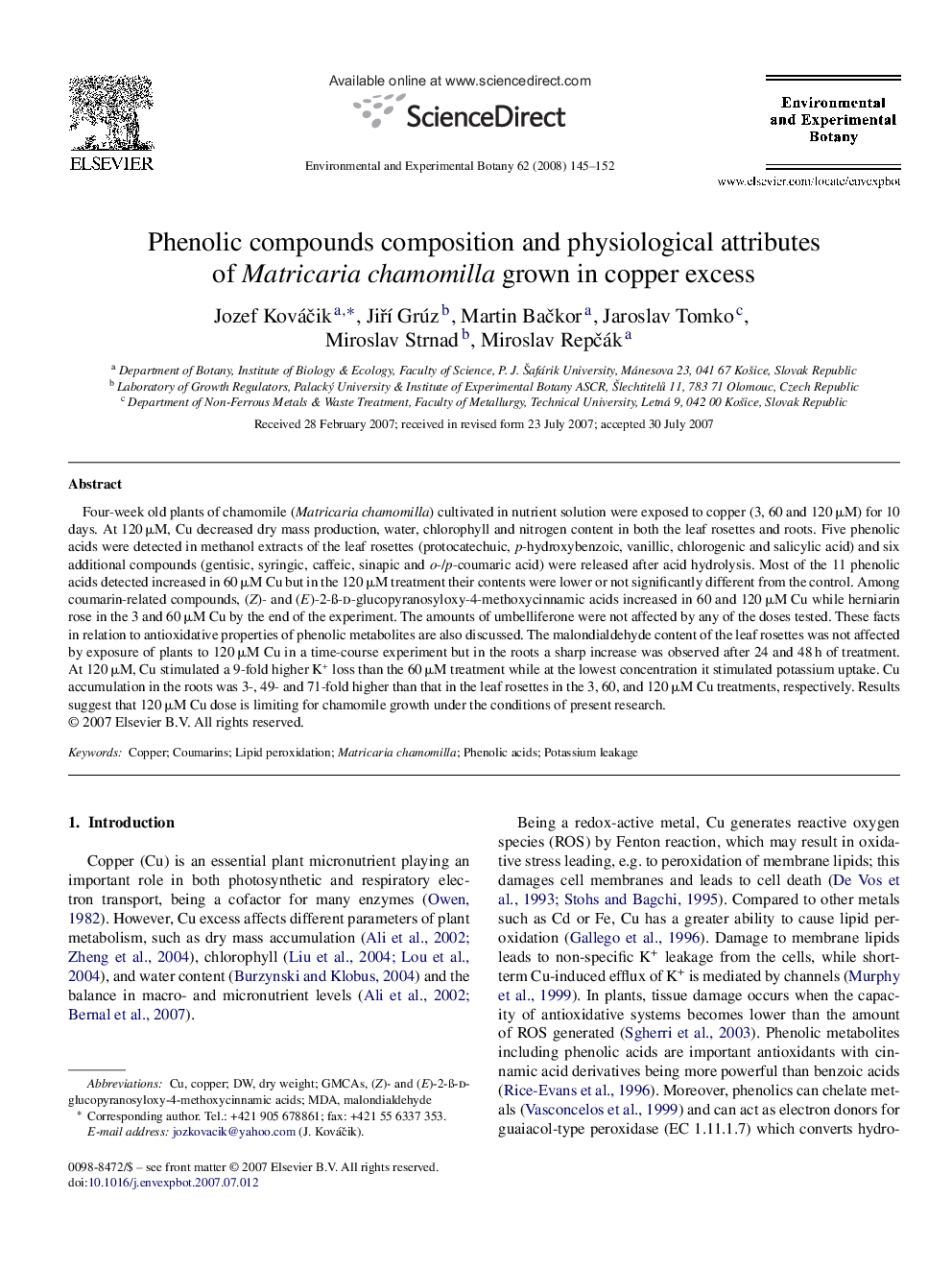| کد مقاله | کد نشریه | سال انتشار | مقاله انگلیسی | نسخه تمام متن |
|---|---|---|---|---|
| 4555344 | 1329253 | 2008 | 8 صفحه PDF | دانلود رایگان |

Four-week old plants of chamomile (Matricaria chamomilla) cultivated in nutrient solution were exposed to copper (3, 60 and 120 μM) for 10 days. At 120 μM, Cu decreased dry mass production, water, chlorophyll and nitrogen content in both the leaf rosettes and roots. Five phenolic acids were detected in methanol extracts of the leaf rosettes (protocatechuic, p-hydroxybenzoic, vanillic, chlorogenic and salicylic acid) and six additional compounds (gentisic, syringic, caffeic, sinapic and o-/p-coumaric acid) were released after acid hydrolysis. Most of the 11 phenolic acids detected increased in 60 μM Cu but in the 120 μM treatment their contents were lower or not significantly different from the control. Among coumarin-related compounds, (Z)- and (E)-2-ß-d-glucopyranosyloxy-4-methoxycinnamic acids increased in 60 and 120 μM Cu while herniarin rose in the 3 and 60 μM Cu by the end of the experiment. The amounts of umbelliferone were not affected by any of the doses tested. These facts in relation to antioxidative properties of phenolic metabolites are also discussed. The malondialdehyde content of the leaf rosettes was not affected by exposure of plants to 120 μM Cu in a time-course experiment but in the roots a sharp increase was observed after 24 and 48 h of treatment. At 120 μM, Cu stimulated a 9-fold higher K+ loss than the 60 μM treatment while at the lowest concentration it stimulated potassium uptake. Cu accumulation in the roots was 3-, 49- and 71-fold higher than that in the leaf rosettes in the 3, 60, and 120 μM Cu treatments, respectively. Results suggest that 120 μM Cu dose is limiting for chamomile growth under the conditions of present research.
Journal: Environmental and Experimental Botany - Volume 62, Issue 2, March 2008, Pages 145–152